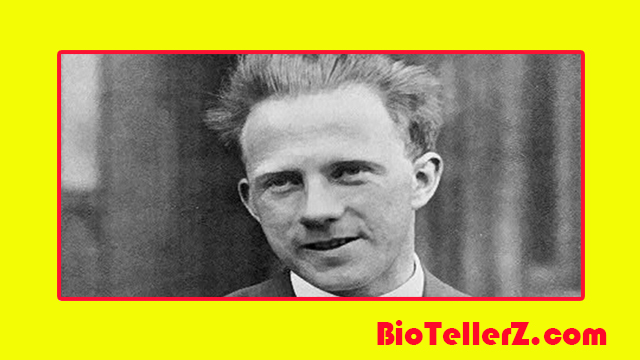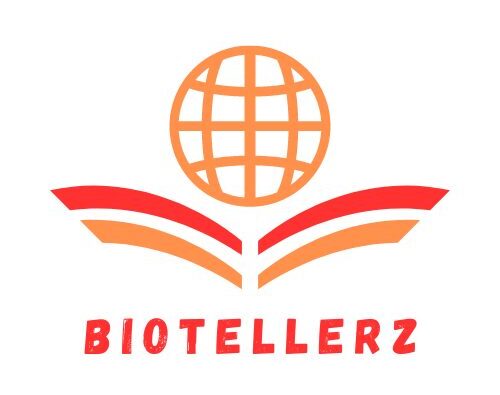In 1925, German physicist and philosopher Werner Heisenberg discovered a way to convert quantum mechanics into a matrix. He goes by the name Werner Karl Heisenberg. He passed away in Munich, West Germany, on February 1, 1976. On December 5, 1901, he was born in Würzburg, Germany. In recognition of that discovery, he received the 1932 Nobel Prize in Physics. He is best known for his uncertainty principle, which he published in 1927 and on which he based his philosophy. It is also important to note his contributions to the theories of the atomic nucleus, ferromagnetism, cosmic rays, and subatomic particles. Both the first West German nuclear reactor in Karlsruhe in 1957 and a research reactor in Munich were both developed with his help. It is highly controversial to discuss his work on atomic research during World War II.

Young Age
August Heisenberg, Heisenberg’s father, was a professor at the University of Würzburg and a specialist in both contemporary and antiquated Greek literature. Additionally, he was a teacher at a secondary classical-humanistic gymnasium school. Werner’s mother, Anna Wecklein, was a Maximilians-Gymnasium rector’s child from a prestigious Munich school. August Heisenberg was appointed a Greek philology professor at the University of Munich in 1910. The following year, Werner started attending the Maximilians-Gymnasium and quickly won over his math teachers. Heisenberg was accepted as a student at the University of Munich in 1920 by Arnold Sommerfeld, an expert in atomic spectroscopy and a supporter of the quantum theory of physics. Niels Bohr, a Danish physicist, first suggested in 1913 that some atomic physics properties are not continuous but only have discrete, or quantized, values at small scales. In 1923, Heisenberg finished his formal doctoral studies and turned in a hydrodynamics dissertation.
Development of Quantum Mechanics
In 1925, after spending a considerable amount of time at Niels Bohr’s Institute of Theoretical Physics at the University of Copenhagen, Heisenberg started working on the problem of spectrum intensities of the electron taken as. a one-dimensional vibrating system called an anharmonic oscillator. He argued that the theory should only be based on observable quantities in his paper “Über quantentheoretische Umdeutung kinematischer und mechanischer Beziehungen,” published in July 1925. Heisenberg’s formalism, which relied on noncommutative multiplication, could be expressed using matrix algebra, as Born and his new assistant Pascual Jordan realized. They did this in a paper they titled “Zur Quantenmechanik” (translation: “On Quantum Mechanics”) and submitted to be published in September. Born, Heisenberg, and Jordan completed the “three-man paper,” also referred to as “Zur Quantenmechanik II,” by November. It is regarded as the cornerstone work of a new quantum mechanics.
The Uncertainty Principle
Quantum mechanics was being developed in various forms during the 1920s. P. (Using vectors in a Hilbert space) created the bracket notation. A. The wave equation was successfully solved by Paul Dirac and Austrian physicist M. Erwin Schrödinger, who were both based in Switzerland at the time. Schrödinger quickly proved that the various formulations were mathematically equivalent, but it was unclear what this equivalence meant physically. In March 1927, Heisenberg’s seminal paper, “Über den anschulichen Inhalt der quantentheoretischen Kinematik und Mechanik,” was published as a result of his second visit to Bohr’s laboratory in Copenhagen.
The Nobel Peace Prize
In Leipzig, Heisenberg began to instruct students in 1927. In partnership with Dirac, Jordan, Wolfgang Pauli, and others, he started a research program to create a quantum field theory, fusing quantum mechanics and relativity theory to comprehend the interaction of particles and (force) fields. After the neutron was discovered in 1932, Heisenberg continued to work on the theory of the atomic nucleus, developing a proton-neutron interaction model that served as an early description of what would later be known as the strong force. The 1933 winners and the 1932 Nobel Prize for Physics were not officially announced until November 1933. Heisenberg received the physics prize in 1932, and Schrödinger and Dirac received the physics prize jointly in 1933.
NSDAP and Heisenberg
1933 saw the rise to power of the National Socialist German Workers’ Party (Nazi Party), the same year that Heisenberg was awarded the Nobel Prize. Nazi policies banning “non-Aryans” or those thought to be politically “unreliable” from the civil service caused a number of professors and academics to be fired or resign, including, for example, Born, Einstein, and Schrödinger as well as several of Heisenberg’s Leipzig students and coworkers. Heisenberg’s response was mainly quiet interventions within the bureaucracy rather than overt public protest, with the hope that the Nazi regime or its most extreme manifestations would not last for very long.
Second World War
Since nuclear fission was discovered, the atomic nucleus has been the subject of much debate. After Germany invaded Poland in 1939, the Army Weapons Bureau hired Heisenberg to work on the nuclear energy problem. After initially commuting between Leipzig and the Kaiser Wilhelm Institute (KWI) for Physics in Berlin and, after 1942, serving as the latter organization’s director, Heisenberg assumed a leading position in Germany’s nuclear research.
As a result of the Nazi setting, this role has caused a great deal of controversy. The research team led by Heisenberg was, of course, unable to build a reactor or an atomic bomb. While some explanations have portrayed Heisenberg as merely incompetent, others have contended that he deliberately sabotaged or delayed the effort. It is clear in hindsight that significant mistakes were made at various points throughout the research. It is also evident that the German nuclear weapons program as a whole lacked the same level of zeal that distinguished the Manhattan Project in the United States. But factors outside of Heisenberg’s direct control had a larger impact on the result.
Related Posts
Donald Trump – Best Guide in 2023
